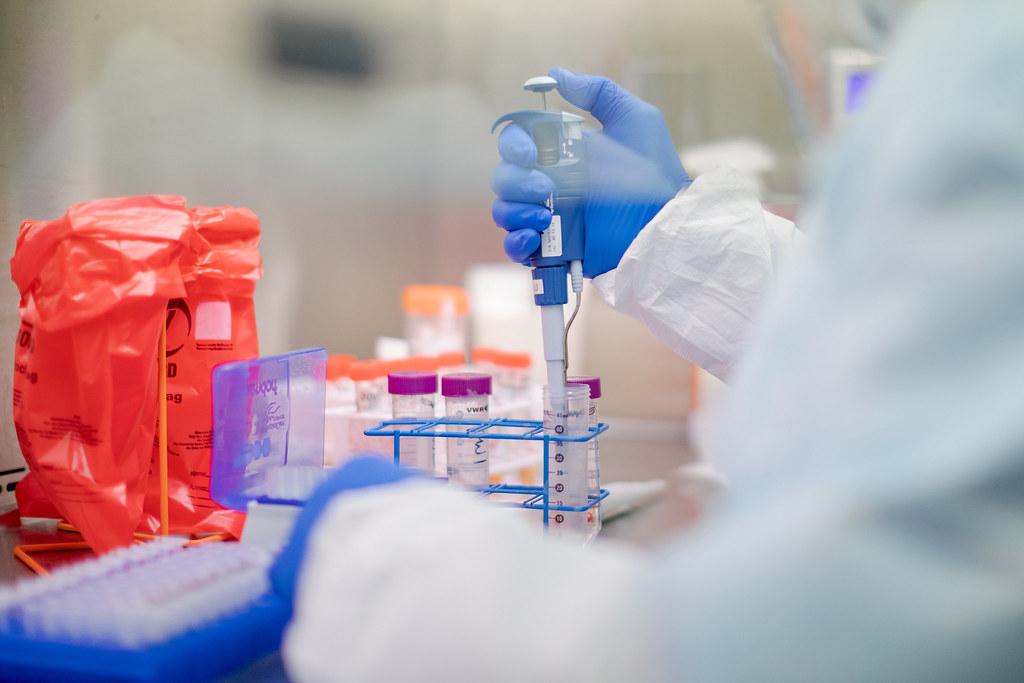Views expressed in opinion columns are the author’s own.
The announcement that five COVID-19 vaccines are in stage three clinical trials has brought a sense of hope to many people. Notably, one vaccine produced by Moderna was shown to be 94.5 percent effective against the virus. Another vaccine produced by Pfizer was shown to be 95 percent effective against COVID-19. Compare that to the common flu vaccine which is only 52 percent effective — with numbers like those, there seems to be a light at the end of the tunnel. But we’re not quite there.
It takes time to safely develop a product, even when the vaccines are being developed at a rapid pace. Typically, it takes years to mass-produce a vaccine, distribute it to all the proper centers in the country, administer it to most of the population and do so without human error.
And although no formal decision has been made, the approved vaccine is expected to first go to groups that are most at risk, including essential workers, people 65 and older and people with certain medical conditions. Regardless, the general public will most likely not be among the first recipients of the vaccine. Herd immunity occurs when around 50 to 90 percent of the population is able to fight off a virus, thus controlling its spread. In this case, herd immunity may not be fully achieved for months — maybe even years — after the vaccine’s approval.
A vaccine is undoubtedly exciting, but it cannot and should not overshadow the importance of continuing to follow the Centers for Disease Control and Prevention guidelines and government regulations. The virus will not go away when the vaccine is approved; just like the seasonal flu that comes back every year, COVID-19 won’t just disappear. And just like we do around flu season, people must be conscious of their symptoms, avoid public spaces when sick and practice clean habits to limit the spread of the illness. If people start to slack and loosely follow or ignore these rules, a new wave of the virus — and ultimately, more deaths — could occur, even when the vaccine begins to get administered.
Even now, there are people with COVID-19 antibodies and, although they may be individually safe for the time being, they too must comply with regulations to ensure others’ safety. Likewise, people with and without the vaccine must do their part to protect their neighbors. Since the virus can survive on various surfaces and spread through asymptomatic people, those who have received the vaccine may still be transmitting the virus. Although someone may be able to fend off the virus internally, the virus can still live on hands, clothing and other surfaces, meaning that anyone without immunity who comes in contact with an infected person is at risk.
While the elderly and those with underlying health conditions are shown to be at the highest risk of developing serious symptoms, young adults are in a comparably advantageous position. But it’s crucial that these young adults continue to abide by the rules while they wait for their turn to receive the vaccine, so that those at higher risk can safely attain immunity. If young people continue to unknowingly shed and share the virus, those at highest risk may fall victim to the illness — before they have the chance to get vaccinated.
Yes, it is exciting to think of a COVID-free world where we can dance against sweaty strangers at a concert, go to school and work without fearing human contact, and hug our grandparents at large family holiday celebrations. But a vaccine will not mark the end of the pandemic. We as a country have a long way to go before a sense of normalcy can be reestablished — even after a vaccine is approved and administered.
Gabriella Kurczeski is a junior English and psychology major. She can be reached at gkurczes@terpmail.umd.edu.



